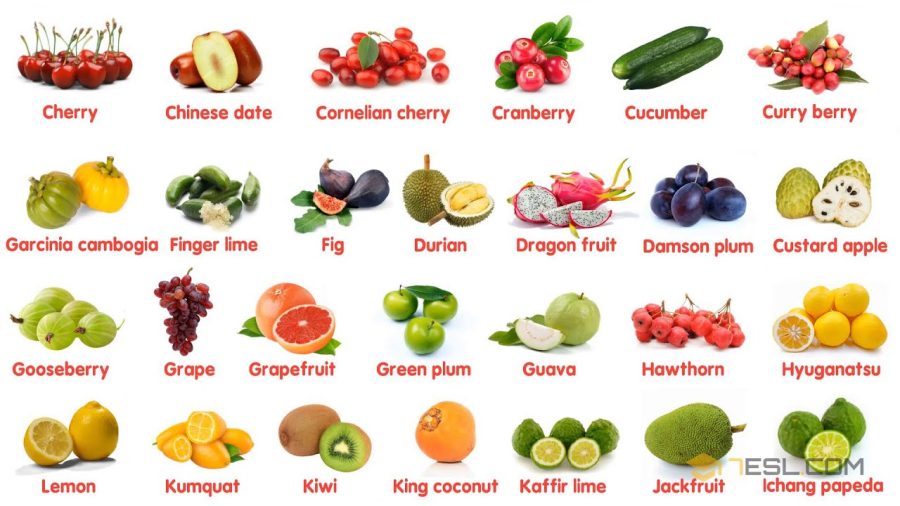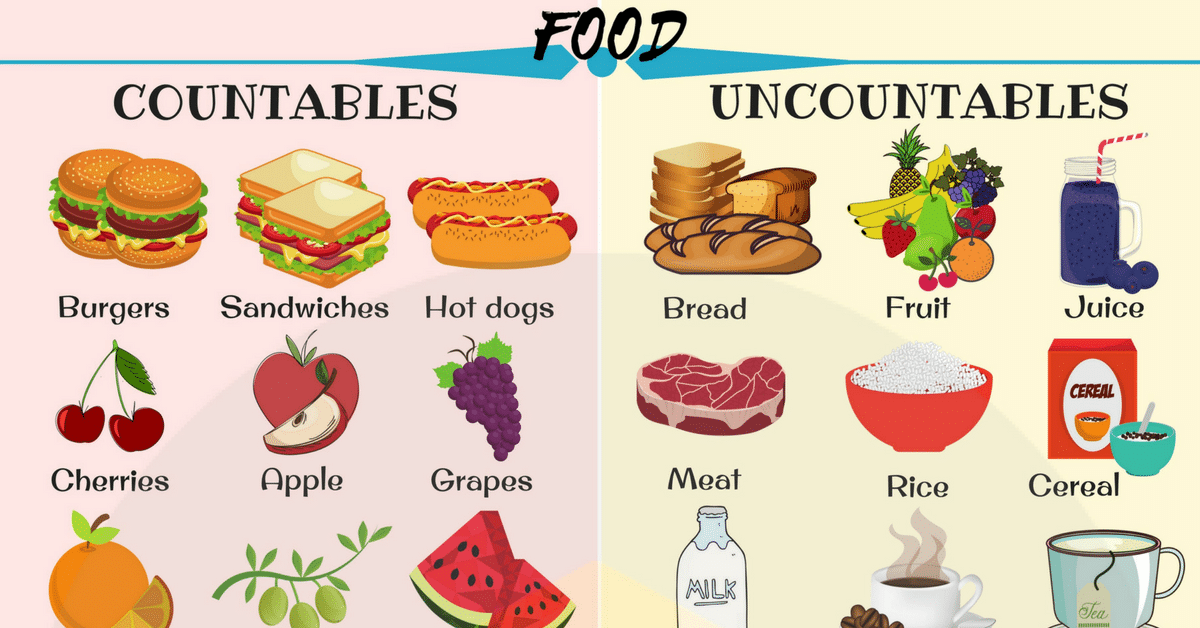chicha in English – Cambridge Dictionary
chicha
noun
[ feminine ] /’ʧi ʧa/
meat
chicha con ensalada
meat with salad
flesh
,
fat
No sé de qué quieres adelgazar, si no tienes chichas.
I don’t know why you want to slim, you’re not fat.
interest
mucha chicha para contar
lots of interesting things to tell
de chicha y nabo
two-bit
un terreno de chicha y nabo
a two-bit piece of land
estar chicha
to be difficult
Conseguir ese dinero está chicha.
Getting that money is difficult.
chicha
noun
[ feminine ] /’ʧi ʧa/
chicha, a fermented beverage
chicha en proceso de fermentación
chicha in the fermentation process
no ser ni chicha ni limonada
to be neither one thing nor the other
Ese diputado no es ni chicha ni limonada.
That deputy is neither one thing nor the other.
Browse
chevió
cheviot
chic
chica
chicha
chicharra
chicharrón
chichón
chicle
Test your vocabulary with our fun image quizzes
- {{randomImageQuizHook.
copyright1}}
- {{randomImageQuizHook.copyright2}}
Image credits
Try a quiz now
Word of the Day
upside down
UK
Your browser doesn’t support HTML5 audio
/ˌʌp.saɪd ˈdaʊn/
US
Your browser doesn’t support HTML5 audio
/ˌʌp.saɪd ˈdaʊn/
having the part that is usually at the top turned to be at the bottom
About this
Blog
There’s bigger fish to fry: talking about things that are not important
Read More
New Words
dopamine decor
More new words
has been added to list
To top
Contents
GLOBAL Spanish–English
definition of chichas by The Free Dictionary
(redirected from chichas)
Also found in: Thesaurus.
chicha
(ˈtʃiːtʃə)
n
(Brewing) a South American drink made from fermented maize or fruit
chicha
(ˈtʃiːtʃə)
n
an Asian pipe for smoking tobacco, consisting of a long tube with a bowl at the end and a reservoir of water that the smoke passes through
Collins English Dictionary – Complete and Unabridged, 12th Edition 2014 © HarperCollins Publishers 1991, 1994, 1998, 2000, 2003, 2006, 2007, 2009, 2011, 2014
ThesaurusAntonymsRelated WordsSynonymsLegend:
Switch to new thesaurus
| Noun | 1. | chicha – an oriental tobacco pipe with a long flexible tube connected to a container where the smoke is cooled by passing through water; “a bipolar world with the hookah and Turkish coffee versus hamburgers and Coca Cola”
calean, hookah, hubble-bubble, hubbly-bubbly, kalian, narghile, nargileh, sheesha, shisha, water pipe pipe, tobacco pipe – a tube with a small bowl at one end; used for smoking tobacco |
Based on WordNet 3.
Mentioned in
?
- calean
- calm
- cider
- fish
- hookah
- hubble-bubble
- hubbly-bubbly
- kalian
- narghile
- nargileh
- pipe
- sheesha
- shisha
- tobacco pipe
- water pipe
References in classic literature
?
Your chicha’s very fine; and ere proceeding further I will tell ye what our Canallers are; for such information may throw side-light upon my story.”
” impetuously exclaimed Don Pedro, spilling his chicha upon his silvery ruffles.
Let me get more into the air, Sirs.” “The chicha! the chicha!” cried Don Pedro; “our vigorous friend looks faint; –fill up his empty glass!” No need, gentlemen; one moment, and I proceed.
View in context
De alli que no se pueda establecer si se conto con la presencia de mitmakunas chichas en el Pucara, a pesar que se sostenga que estos grupos se incorporaron a la poblacion de la quebrada con las huestes incaicas (Gonzalez 1982; Raffino 1993).
Esta figura presenta una pequena perforacion en su boca, posiblemente utilizada para libar chicha. Asociados a este vaso se recuperaron el cuello de un cantaro Humahuaca N/R (MEJBA 3391) y dos piezas rojas pulidas, segun Debenedetti (1930: 41) de fina manufactura.
Distribucion y consumo de ceramica inca en el Pucara de Tilcara (Quebrada de Humahuaca, Argentina)
Arrivees a Nice la semaine derniere, les chichas du futur semblent etre plutot bien accueillies.
Autant dire que cette chicha ne ressemble pas franchement au modele traditionnel.
La future chicha est electronique, elle s’appelle [beaucoup moins que] Starhooks [beaucoup plus grand que] et est deja en vente a Nice
Yeast diversity associated to Colombian traditional “chichas”
Diversidad de levaduras asociadas a chichas tradicionales de Colombia
The earliest known inhabitants of the area were, in the words of the late local historian Francisco Salazar Tejerina, a very valiant and warlike tribe.
MINING TUPIZA’S MARVELS
During the Tawantinsuyu or Inca Empire, chicha (corn beer) consumption, politics, and human sacrifices were intimately intertwined with reciprocity, alliances, and hospitality, which were key components of the Inca state’s goals of conquest, control, and expansion (Morris, 1974; Morris and Thompson, 1985; Dillehay, 2003; Morris and Covey, 2003; Bray, 2009; Morris et al., 2011).
Microscopic analysis of botanical residues from Cerro Esmeralda burial in northern Chile: state and death ritual implications/ Analisis microscopico de residuos vegetales del sitio de cerro Esmeralda, norte de Chile: estado e implicaciones acerca del ritual funerario/ Analise microscopico de residuos vegetais da area de cerro Esmeralda, norte do Chile: estado e implicacoes sobre o ritual funerario
Dictionary browser
?
- ▲
- Chiba
- Chibbal
- Chibcha
- Chibchan
- Chibemba
- chibol
- chibouk
- chibouque
- chic
- chica
- Chicago
- Chicago Judy
- Chicago School
- chicalote
- Chicana
- chicane
- chicaner
- chicanery
- Chicano
- chiccory
- Chice
- Chich
- chicha
- Chichagof Island
- chicharrones
- chichas
- Chichén Itzá
- ChichénItzá
- Chichester
- Chichevache
- Chichewa
- chichi
- Chichihaerh
- chichipe
- Chichling
- chick
- chick flick
- chick lit
- Chick pea
- chickabiddy
- chickadee
- Chickamauga
- chickaree
- Chickasaw
- chickasaw plum
- Chickasawhay River
- Chickasaws
- chickee
- chicken
- chicken and rice
- chicken breast
- ▼
Full browser
?
- ▲
- Chicano/Latino Medical Student Association
- Chicanos
- Chicanos
- Chicanos
- Chicanos Latinos Unidos en Servicio
- Chicanos Por La Causa, Inc
- CHICATA
- Chiccory
- Chice
- chicer
- chicer
- chicest
- chicest
- Chich
- chicha
- chicha
- Chicha Morada
- Chicha Morada
- Chichagof
- Chichagof
- Chichagof Island
- Chichagof Island
- Chichagov, Pavel
- Chichagov, Pavel Vasilevich
- Chichagov, Vasilii
- Chichagov, Vasilii Iakovlevich
- Chicharron
- Chicharrón
- Chicharrones
- Chicharrónes
- chichas
- Chichen Itz‡
- Chichen Itz‡
- Chichen Itza
- Chichen Itza
- Chichen Itzá
- Chichen Itzá
- Chichén Itza
- Chichén Itza
- Chichén Itzá
- Chichén Itzá
- Chichen Itza, Mexico
- ChichenItza
- ChichénItzá
- Chicherin, Boris
- Chicherin, Boris Nikolaevich
- Chicherin, Georgi Vasilyevich
- Chicherin, Georgii
- Chicherin, Georgii Vasilevich
- Chicherov, Vladimir
- Chicherov, Vladimir Ivanovich
- Chichester
- Chichester
- Chichester Airfield
- Chichester Alumni Band
- Chichester and District Archaeology Society
- Chichester Area Talking News
- Chichester Harbour Conservancy
- Chichester High School For Boys
- Chichester High School for Girls
- Chichester Rugby Football Club
- ▼
how chicha is made in Peru’s Sacred Valley
In Peru’s Sacred Valley, Quechua women have been brewing corn beer for centuries.
The sacred site of Machu Picchu and the many holy temple ruins dotted around the famous Sacred Valley of Peru attract over a million tourists a year. This alpine landscape, which apparently reigns eternal spring, is a real breadbasket with a dozen varieties of potatoes, peaches, strawberries and other noteworthy dishes, as well as no less than 25 different varieties of corn. This culture is so important for the local population – the Quechua Indians (more than 3 million people) that the main square of the city of Urubamba is decorated with a giant ear of corn – like the statues of former leaders in the central squares of the cities of the world.
As soon as the working day comes to an end, the locals head straight for their favorite “holes in the wall”. Often these are very modest establishments, where the bulbs, dimmed by time, illuminate the husky card players who sit at tables elbow to elbow with strangers.
In this part of the world, not Kellerbeer, not light sunbeds and not the best bitters are preferred. Their drink is called Chicha de Jora. Of course, it wasn’t called “chicha” until the arrival of the first Spanish conquistadors, but it is believed that the malted white corn beer that is drunk today in “akha wasi” (the name of drinking establishments in Quechua) was one of the staples of the ancient Incas, who ruled in the distant past, until the XIV-XV centuries.
Parallel Beer World
Practically speaking, there are about as many variations of chicha in Latin America as there are wild ales in the US. For example, in Bolivia’s Cochabamba Valley, there is a lightly carbonated, sour drink served in tiny bowls. It can be boiled with malted corn, barley, quinoa and wheat, making at least two decoctions. In Ecuador, in the Otavalo region, chicha de yamor is brewed from a mixture of seven different varieties of corn, and in early September there is a festival dedicated to this drink. But back to the Sacred Valley of Peru. Chicha de hora is a juicy, refreshing drink topped with lush foam that clings to the walls of the caporal, the ubiquitous 1-litre shaker-like glass named after military rank. This fluffy, slightly acidic drink has earned the nickname “chiffon” thanks to the lush head of foam that adorns each serving.
In terms of texture and appearance, chicha de hora is strikingly similar to a milkshake IPA. But since it’s naturally carbonated and contains no hops, that’s where the similarities end. The smoothness of the texture, which is very different from the traditional Andean chicha, can be explained by three reasons. First, the beer is always served very fresh. In fact, when the chichera – as the chicha brewers are called – serves the beer to the customers, the fermentation is not yet fully completed. Secondly, the drink is poured into caporals with the help of a huge ladle, while you need to move your hand back and forth, just like when pouring soup. When moving, the gas bubbles burst upward. Eventually this cascade of foam remains at the top of the glass due to the high protein content of corn, which the bacteria have not yet digested. And, to think, some brewers even use wheat flour to “compact” their beer even more. This smoothie-like texture is also needed to make the strawberry-flavoured version, frutillada.
Like Berliner Weisse, whose acidity is balanced with raspberry or woodruff flavored syrups, chicha also has a popular fruity variant. Frutilada is named after the strawberry that gives it its flavor. A thick, low-alcohol dessert drink (maybe a dessert sour?), with a rich strawberry aroma, balanced by subtle acidity and a strawy aftertaste associated with sweet rustic simplicity. And, just as confectioners decorate their wares, most brewers serving frutilade sprinkle each glass with ground cinnamon or coriander seeds, decorating a very dense head of foam with them, which adds a rich spicy aroma that you will feel as soon as your nose approaches the giant glass.
Of course, in a place filled with mysterious signs and symbols, myths also abound with descriptions of miraculous cases associated with the use of these spices. Some say they help stop the chicha from fermenting in the drinker’s stomach. Others claim they are good for the prostate. And others dig even deeper: it turns out that cinnamon and coriander have a beneficial effect on the blood.
Complexity proven by DNA sequencing
Spontaneous fermentation of chicha de hor takes place in large earthenware vats where white malted corn must is sent after several hours of mashing and boiling. The pots where chicha roams are never washed, as are lambic barrels, to preserve the unique flora. The same goes for the giant spoon used to stir the contents in these traditional fermenters. For Quechua brewers, these are magical items. But a team of Canadian scientists have recently taken an interest in the way chicha is made, and are now looking to unravel some of Mother Nature’s centuries-old tricks and secrets.
Earlier this year, Le Labo – Solutions Brassicoles in Quebec received three samples of chicha de hora collected from three different brewers on the first day of consumption of a fresh batch of chicha.
Studies have shown that the Mamacu sample contained at least 16 different microorganisms, including Candida humilis (a common microorganism in bread sourdough), Pichia kluyveri (a relative of Brettanomyces), Lactobacillus delbruckii, Lactobacillus rossiae and, of course, various strains of Saccharomyces cerevisiae. The Sumaq Aqha sample contained Saccharomyces cerevisiae chicha (a specific strain found in Chicha and listed under that name in GenBank) and Lactobacillus acidophilus, while the El Descanso sample had higher concentrations of Lactobacillus plantarum along with Saccharomyces cerevisiae chicha.
Results from Gerald Bourdaouduy, Chief Brewery Engineer trained at Institut Meurice, and Miriam Ladry, Project Manager at Laval University, complement findings from a 2013 study by a team of microbiologists and parasitologists from the Spanish University of Santiago de Compostela , whose discoveries mainly concerned atypical strains of Saccharomyces cerevisiae in their own samples from the Sacred Valley. Thanks to the dedicated efforts of these teams, the mystery of the spontaneous fermentation of chicha de hora is close to being solved. Although, as Ladry states, “the differences between the microorganisms in the three sequenced chicha samples are so great that they seem to be completely individual for each brewery.”
Chicha in the 21st century
Bamboo poles in front of Peruvian chicheras, adorned with red plastic bags, tell the story of chicha de hora, just like the flags of centuries ago. But today, more and more beer drinkers visiting the Sacred Valley can find establishments by their names printed on real signs.
One of the most famous brewers in the valley is Señora Flora, the owner of El Descanso chicheria, near the city of Urubamba, on the way to the village of Yanahuara. Senora Flora was the first to change the concept and appearance of the chicheria and, in cooperation with travel agencies, tell visitors about the features of her work. In doing so, she not only established contact with a new audience, but also inspired many “chichevars” in the vicinity of Urubamba to do the same.
An example of this is the chicheria Mamacu located a couple of houses away. Since then, they’ve been working on their educational exhibit: a small tasting room adorned with trinkets from local artisans and colorful corncobs of all sorts hanging from the ceiling. Sumaq Aqha has gone even further, with a full-fledged store and a small terrace where guests can watch the corn field glow in the sun while playing games next to the large rustic oven.
Back in Cusco, La Cusqueñita, near Paseo de los Heroes, is probably the most obvious link between homemade rural chicheras and a more cosmopolitan beer industry. Its spacious 320-seat hall is reminiscent of Munich’s legendary Hofbräuhaus, and with 1-litre caporals, you’ll feel like a duck to water during the daily dance performances on the big stage. Yet the chicha de hora brewed here tastes just as fruity, tart, and strawy as those brewed in Yanahuara’s taverns.
These days, even upscale restaurants have also succumbed to this trend. Right in the middle of the UNESCO-protected old town, the stylish dining room on the main square now has its own chicha de jora. And even the recognizable red bag flutters proudly on a pole next to colorful signs. And at ground level it says in English that there is traditional beer upstairs. La Feria has also begun adding sugar to its chicha in an attempt to attract more tourists.
A few blocks away, world-famous chef Gaston Acuria has opened a restaurant with the uncomplicated name Chicha.
Finally, the Lima-based microbrewery with a brasserie, not unlike its American contemporaries in terms of design and richness of the assortment, is the only one in the country that produces and bottles chicha de hora. Cervecería Barbarian sells its Chicha Tu Mare to the capital’s many bars and restaurants. Even Central, the restaurant of famed chef Virgilio Martinez, number 6 on the list of the 50 best restaurants in the world, proudly serves its fans something new to try. Brewer and owner of Barbarian Brewing, Ignacio Schwalb, says his modernized version of chicha is brewed with kettle sour and fermented before bottling, unlike more traditional Sacred Valley versions.
Something to chat about spontaneously
So, if chicha de hora has been brewed in Peru’s Sacred Valley for centuries and remains one of the most popular drinks in the entire region, why hasn’t it caught on in the international beer community? Because the brewers are not white? Because they often speak Quechua? Or because they are women?
It’s hard to say anything concrete, but one of the possible explanations seems more or less obvious. Indeed, Western confusion about chicha is no doubt exacerbated by how differently the word “chicha” can be used in Spanish and Quechuan. For example, something informal and folksy is “chicha”. In a word, there is chicha music, chicha culture, chicha newspapers. On the other hand, there is chicha morada, a soft drink made from purple corn and spices. But chicha de hora—spontaneously fermented corn beer—has nothing to do with either of those chichas.
But this drink is not in danger of extinction: the production of chicha de hora flourishes in the Sacred Valley, and hundreds of breweries are dispersed throughout it. And they do not necessarily need approval from the West. Lambic waited many years for the protection of the Belgian government, but chicha de hora easily gained a special status in Peru. In November 2015, the Minister of Culture of Peru declared the chicheria and picanteria part of the country’s cultural heritage and placed them under state protection.
“This is the most important measure ever taken in the country to preserve the universal historical memory and recognize the main role of women in local cuisine,” commented sociologist Isabel Alvarez Novoa, who led a research team consisting of two anthropologists and a local historian.
This official recognition should help brewers continue their long tradition of making the drink, facilitating access to local varieties of corn and building links with the culinary and tourism industries.

 copyright1}}
copyright1}}